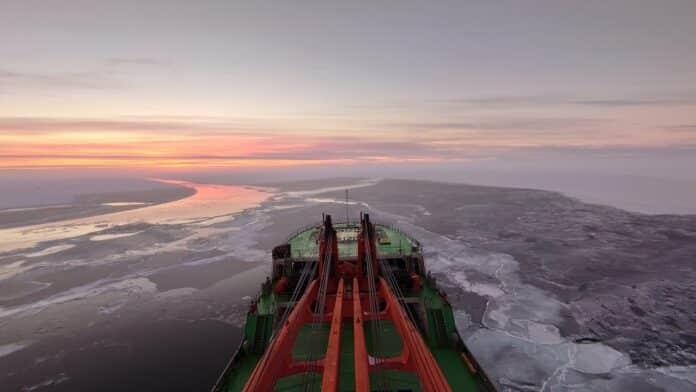Arctic sea ice has been disappearing over the past decades because warm Atlantic water is being advected into the high-latitude ocean in increasing amounts, a process known as “atlantification.”
A new study led by an international team of scientists explains the stalled trend in Arctic Ocean sea ice loss since 2007, indicating that stronger declines will occur when the atmospheric feature known as the Arctic dipole reverses itself in its recurring cycle.
Igor V. Polyakov said, “This is a multidisciplinary view on what’s happening in the Arctic and beyond. Our analysis covered the atmosphere, ocean, ice, changing continents, and changing biology in response to climate change.”
A wealth of data, including direct instrumental observations, reanalysis products, and satellite information dating back many decades, demonstrate that the Arctic dipole alternates in a 15-year cycle and that the system is most likely nearing the end of its current phase.
The current “positive” regime of the Arctic dipole, which scientists claim has been in place since 2007, centers high pressure over the Canadian section of the Arctic and creates clockwise winds. A low-pressure system is centered over the Siberian Arctic, with counterclockwise winds.
This wind pattern generates upper ocean currents, which have year-round effects on regional air temperatures, atmosphere-ice-ocean heat exchanges, sea-ice drift and exporters, and biological consequences.
A researcher from the University of Alaska Fairbanks said, “Water exchanges between the Nordic seas and the Arctic Ocean are critically important for the state of the Arctic climate system and that sea ice decline is “a true indicator of climate change.”
Researchers discovered decreased flow from the Atlantic Ocean into the Arctic Ocean through the Fram Strait east of Greenland and increased Atlantic flow into the Barents Sea, located north of Norway and western Russia, after monitoring oceanic reactions to the wind pattern since 2007. They also discovered that under the current positive Arctic dipole regime, counterclockwise winds from the low-pressure zone transport fresh water from Siberian rivers into the Canadian section of the Arctic Ocean.
The westward freshwater move from 2007 to 2021 helped reduce the total decline of Arctic sea ice compared to 1992 to 2006. The depth of the freshwater layer grew, making it too thick and stable to mix with the heavier saltwater below. The heavy freshwater layer prevents warmer seawater from melting sea ice on the seafloor.
The new study refers to the periodic changes in the Fram Strait and the Barents Sea as a “switchgear mechanism” generated by Arctic dipole regimes. The switchgear mechanism in sub-Arctic waters significantly impacts marine life, potentially providing better living conditions for sub-Arctic boreal species in the eastern part of the Eurasian Basin compared to its western part.
He said, “We are beyond the peak of the currently positive Arctic dipole regime, and at any moment, it could revert. This could have significant climatological repercussions, including a potentially faster pace of sea-ice loss across the Arctic and sub-Arctic climate systems.”
The result shows that sea ice drops sharply when an atmospheric feature known as the Arctic dipole reverses in its recurrent cycle.
The U.S. National Science Foundation and the U.S. Office of Naval Research funded the research.
Journal Reference:
- Randi B. Ingvaldsen, Igor V. Polyakov,et al. Fluctuating Atlantic inflows modulate Arctic atlantification. Science. DOI: 10.1126/science.adh5158
